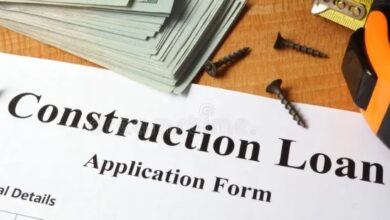DSCR Loans for Investors: Unlocking Smart Financing for Rental Properties

Investing in rental properties has long been a proven way to generate passive income and build long-term wealth. However, one of the main challenges real estate investors face is securing the right type of financing that aligns with their investment strategy. Traditional mortgage options may not always be ideal, especially when an investor’s income is irregular or tied up in other properties. This is where Debt Service Coverage Ratio (DSCR) loans come into play, offering a flexible and property-focused financing option that many investors find advantageous. In this guide, we’ll delve deeper into what DSCR loans are, how they work, and why they can be a game-changer for investors looking to expand their portfolios.
Understanding DSCR Loans: What They Are and How They Work
DSCR loans stand out from conventional loans because they shift the focus from the borrower’s financials to the income generated by the rental property itself. Unlike traditional mortgage products, which often require extensive income verification and tax returns, DSCR loans base approval on the property’s net operating income (NOI) and its ability to cover the debt obligations. Essentially, this loan option assesses whether the rental property generates enough income to meet its mortgage payments, hence making it particularly attractive for real estate investors with multiple properties or those who may have fluctuating income.
What’s more, these loans fall under the category of non-QM loans (non-qualified mortgages), meaning they don’t adhere to the strict lending criteria set by government-sponsored enterprises like Fannie Mae or Freddie Mac. This flexibility makes DSCR loans ideal for a broader range of borrowers, including those with complex financial profiles, investors with multiple properties, or even those looking to avoid the cumbersome process of income verification altogether.
How DSCR Is Calculated: The Key Metric for Approval
At the core of DSCR loans is the calculation of the Debt Service Coverage Ratio, a vital metric that helps lenders assess the risk of lending to the borrower based on the property’s financial performance. The DSCR is computed by dividing the property’s net operating income (NOI) by its total debt obligations, which include the principal and interest payments.
For example, if a rental property generates $100,000 annually in NOI and the debt payments total $80,000, the DSCR is 1.25. A ratio of 1.0 means the property’s income exactly covers its debt payments, while a ratio above 1.0 indicates a cushion that can help ensure the investor can meet their loan obligations even if income dips slightly. Most lenders typically require a DSCR of 1.25 or higher to approve the loan, though this requirement can vary depending on the lender and the property’s location.
The higher the DSCR, the better the property’s cash flow, which can also open doors for better loan terms such as lower interest rates or smaller down payments. Investors need to know their property’s DSCR before applying for this type of loan, as it plays a critical role in the approval process.
Read also: How Business Loans Cater to Small Businesses
The Benefits of DSCR Loans for Investors: Why They Stand Out
DSCR loans come with a host of benefits that make them an appealing choice for savvy real estate investors. One of the biggest advantages is the ability to qualify based on the rental property’s income rather than personal financial statements. This is particularly useful for investors who prefer not to disclose their tax returns, or those with complex income structures, such as those who earn passive income, run businesses, or have varying monthly revenue streams.
Moreover, DSCR loans often come with fewer restrictions than traditional mortgages, allowing investors to scale up and finance multiple rental properties simultaneously. Whether you’re a seasoned investor looking to grow your real estate portfolio or a first-time buyer of rental properties, DSCR loans offer the flexibility to meet your investment goals without the hassle of extensive paperwork.
Additional key benefits include:
- No income verification is required, allowing for a faster and simpler loan application process.
- Multiple property financing makes it easier for investors to manage and expand their rental portfolios without being limited by income constraints.
- Flexible qualification criteria, as approval is based on the property’s income-generating ability rather than personal debt-to-income ratios.
DSCR Loans: Pros and Cons
As with any financing option, DSCR loans come with their own set of advantages and drawbacks that investors should carefully consider:
Pros:
- Easy qualification based on the property’s cash flow, which can be particularly helpful for investors with non-traditional income streams.
- Ability to finance multiple properties at once, providing a streamlined way to expand a real estate portfolio.
- No need for extensive income verification, simplifying the approval process.
- Flexible loan terms, with some lenders offering interest-only options or longer loan terms for experienced investors.
Cons:
- Higher interest rates compared to traditional mortgages, as DSCR loans are considered higher-risk loans for lenders.
- Larger down payments are often required, with some lenders requesting up to 25% of the property’s purchase price.
- Stricter DSCR requirements from some lenders, which can limit borrowing options if the property doesn’t meet the minimum cash flow criteria.
- Limited lender options, as not all mortgage providers offer DSCR loans, potentially making it harder to find competitive rates.
Is a DSCR Loan Right for You? Key Considerations
If you’re a real estate investor with fluctuating or irregular income, or if you prefer not to disclose personal financial information during the mortgage process, then a DSCR loan could be a great option. These loans are particularly advantageous for those looking to invest in income-generating rental properties and scale up their portfolios without being held back by traditional income verification methods.
However, it’s crucial to weigh the potential downsides, such as higher interest rates and larger down payment requirements, before deciding if this loan type aligns with your long-term investment strategy. If you have a property with a strong cash flow and can meet the DSCR requirements, the benefits may far outweigh the drawbacks.
Conclusion: A Powerful Tool for Real Estate Investors
DSCR loans offer a unique and flexible solution for investors seeking to finance rental properties based on the property’s income-generating potential. By shifting the focus from personal income to property performance, these loans open up new possibilities for investors looking to build or expand their portfolios. Whether you’re a seasoned real estate investor or just starting out, DSCR loans provide the opportunity to secure the financing you need to unlock the full potential of your rental properties.
As you evaluate your financing options, consider how DSCR loans can support your investment goals and provide a pathway to scalable growth in the competitive real estate market.




